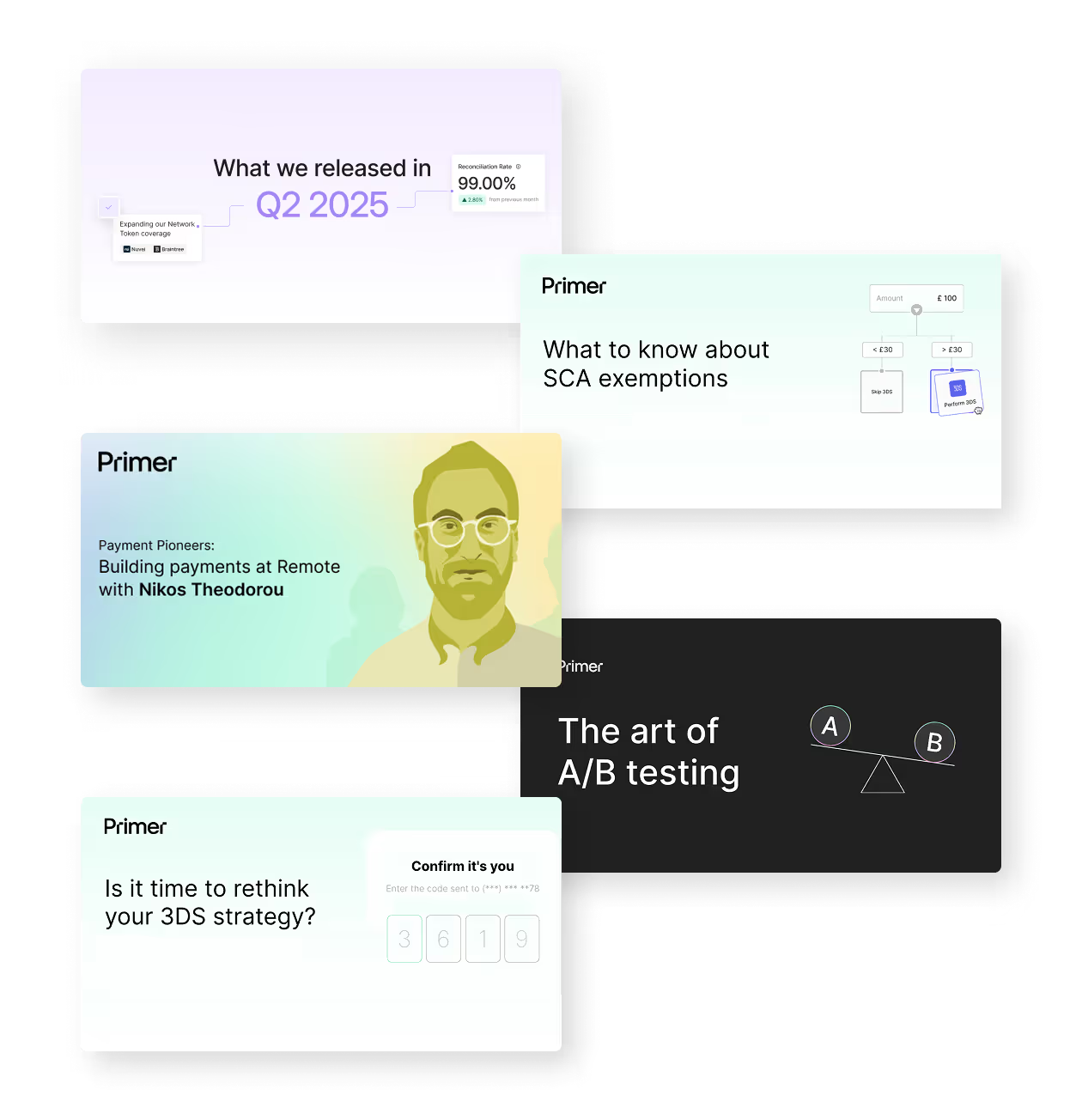Cart abandonment poses a significant challenge for online sellers. In the highly competitive world of digital commerce, customers have numerous options. This makes addressing shopping cart abandonment crucial to winning back lost customers.
A recent Primer study of 2,000 consumers and 500 leading retail businesses found that 37% of carts are abandoned. Other studies put that number as high as 70%. Regardless of the exact figure, it's evident that businesses face substantial revenue loss due to cart abandonment.
What is cart abandonment recovery?
Cart abandonment recovery is the practice of re-engaging customers who have added items to their online shopping cart but exited without finalizing their purchase.
This process is different from cart abandonment prevention, which aims to avoid customers abandoning their carts in the first place.
The methods employed for cart abandonment recovery often revolve around utilizing marketing automation and enhancing user experience (UX) design. The objective is to motivate customers who have previously been interested in your products to finalize their purchase. These strategies encompass a variety of actions, including sending tailored emails, providing discounts through phone calls, and executing retargeting campaigns.
Cart abandonment rate formula
The cart abandonment rate is a crucial metric that reveals the proportion of shoppers who add items to their cart but still need to complete the purchase. To calculate the cart abandonment rate, you can utilize the following formula:
Cart Abandonment Rate = 1 - (Number of Completed Transactions / Number of Started Transactions) * 100
For example, if you have 60 completed transactions and 150 created shopping carts, the abandonment rate would be 60%.
While this figure helps online retailers understand their customer's shopping behavior, relying solely on this metric would be dangerous as it can be misleading. For example, new businesses with low web traffic or sales are especially susceptible to skewed statistics, as the data set is often too small to be reliable.
The cart abandonment rate is a good starting point for recovery. Following this, you can calculate the cart abandonment recovery rate using the following formula:
Cart Abandonment Recovery Rate = (Recovered Carts / Number of Started Transactions - Number of Completed Transactions) * 100
Extending the example above, assuming that you recovered 15 of the 90 abandoned carts, you would achieve a recovery rate of 12.5%.
Why do shoppers abandon their shopping carts?
There are several reasons why shoppers might abandon their shopping carts. Our research revealed that 48% of UK shoppers cite delivery costs as a reason for abandoning their cart. Some of the other reasons for cart abandonment include:
- Delivery delays
- Creating an account to pay
- Payment failures
- Complicated payment process

While the reasons mentioned are general explanations for cart abandonment, businesses should investigate customer data to determine the specific causes. Gaining insights into why a shopper leaves their cart behind is instrumental in shaping an effective cart abandonment recovery strategy. This approach enables businesses to tackle crucial problems affecting revenue, build trust with customers, and elevate the overall customer experience.
Cart abandonment recovery strategies
Understanding why cart abandonment occurs is just the starting point. Here are some actionable strategies that businesses can implement to recover potentially lost sales due to cart abandonment:
Send cart abandonment emails
Sending personalized emails to customers who have abandoned their carts is an effective re-engagement method. These emails tend to outperform typical marketing emails, boasting a 45% open rate—significantly higher than the average 21%, as reported by MooSend. According to the same source, approximately 50% of individuals who interact with a cart abandonment email make a purchase.
While you could opt to send a single email, employing a workflow or sequence of emails can be equally effective. A potential email sequence might commence with a gentle reminder, followed by a discount offer, culminating in a final reminder, accompanied by suggestions for related products that the customer might find appealing.
These emails aim to facilitate a seamless process for customers to re-engage and finalize their purchases. To minimize potential hurdles, you could integrate a one-click payment method for returning customers. This streamlined approach enables customers to effortlessly proceed with their purchase, utilizing securely stored details facilitated by tokenization.
By leveraging insights derived from your customer data and understanding why carts are abandoned, your aim should be to address their pain points and concerns. For instance, if a dearth of payment options is a prevalent reason for cart abandonment, capitalize on this knowledge by enumerating all the accepted payment methods in your communication.
Improve your conversion rates with Primer.
Personal outreach
You could call or connect with customers if you prefer a traditional approach. This builds a rapport that shows you care while addressing their concerns. This strategy works well when dealing with high-ticket items or aiming to create or maintain loyal customers.
This idea is supported by a common marketing tactic known as the familiarity principle (or the mere exposure effect). People tend to develop a preference for things that they are familiar with. In other words, the more we are exposed to something, the more we like it.
By personally reaching out to these customers, you create an added touchpoint, boost engagement, and build a personal relationship that encourages users to return and finalize their transactions.
Set up retargeting campaigns
98% of people who visit a site for the first time leave without buying anything. They might browse and add what they like to a cart for consideration or price comparison.
Because these visitors have already been introduced to your brand to some extent, converting a sale during their subsequent visit becomes more streamlined. This is where the role of a retargeting campaign comes into play – its purpose is to bring these visitors back to your website.
Retargeting campaigns function by presenting online advertisements to those who have previously visited your website or are present in your database as contacts. This approach distinguishes itself from cart abandonment emails, as retargeting ads can be displayed to individuals who still need to provide their email addresses.
These advertisements serve as reminders to your visitors about your products and services. This strategy proves effective when promoting best-selling items, introducing new collections, or providing discount codes. While retargeting is a strong strategy on its own, combining it with other advertising tactics can lead to a 50% increase in product sales.
Push notifications
Another option is to create alerts and send them directly to a customer's browser or mobile device. By sending targeted and timely messages, push notifications prompt a customer to complete their purchase.
These notifications are incredibly versatile and can be used to include:
- Reward offers
- Discounts
- Limited-time promotions
While they provide good visibility, you should err on the side of caution when using them. Sending too many push notifications can come off as spam.
Add dedicated cart recovery plugins to your website
Dedicated cart recovery plugins automate the processes of a recovery strategy. You can use many different types of plugins depending on your website and the goal you're trying to achieve. You could use a plugin that tracks the items people leave in their cart or auto-send emails after a cart has been abandoned.
Plugins can also store data based on your campaign's analytics. From these data points, you can draw insights to help you understand and address the specific reasons behind cart abandonment.
For example, if you've noticed high-value orders getting canceled at an increasing rate, you could create a support ticket that sends emails asking the customer their reason for canceling.
Create automated workflows and streamline cart abandonment recovery with Primer Automation.
Use chatbots
In a world of instant gratification, waiting days or hours for an email response regarding a purchase is a thing of the past. The modern consumer demands immediate solutions, and any delay could cost you their loyalty as they turn to competitors. A chatbot immediately assists customers by answering queries and providing real-time information. They can also help to recover abandoned carts by reminding customers to finish their purchases.
Exit intent pop-ups
When users are about to leave your website, you can install pop-up alerts that offer them a reason to stay or complete their purchase.
Pop-ups could come as a discount, free shipping, or a simple reminder of their shopping cart. These alerts have an average conversion rate of 17.12% so long as you can create attention-grabbing pop-ups with these principles in mind:
- Optimize the design to make it clear and attractive
- Make your headline stand out and clearly explain what you are offering
- Leave one value proposition
- Use a relevant image that guides your visitor's eyes to the value proposition
- Don't make the pop-up too intrusive, as users will click off without reading the CTA
The bottom line
There's a growing disconnect between what customers want and what online businesses provide. We've done the legwork to understand why customers leave their carts, so all that's left for you to do is implement solutions to bridge the gap.
The cart abandonment recovery strategies outlined in this article should go some way in helping you establish your strategy. While some are more impactful than others, it's a good idea to implement various solutions depending on your findings when evaluating your cart abandonment data.
Primer offers a variety of solutions that can help you simplify cart abandonment recovery. Whether via automated workflows or tackling core customer issues surrounding the checkout process, we can help.




(1).png)
.png)